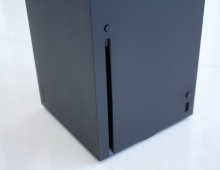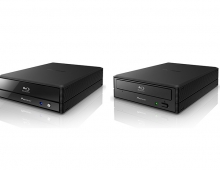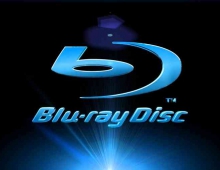
CEATEC: Electronics makers exhibit a plethora of Blu-ray products
Products labeled with the "Blu-ray Disc" logo were on display all around the CEATEC JAPAN 2002 event held from Oct. 1-5 at the Makuhari Messe in Chiba prefecture, near Tokyo.
Almost all the companies that have been involved in setting the specifications for Blu-ray technology, or major AV equipment manufacturers, showcased their new products at CEATEC. They are Hitachi Ltd., Matsushita Electric Industrial Co., Ltd., Pioneer Corp., Royal Philips Electronics NV, Sharp Corp., and Sony Corp.
Some other new Blu-ray products from manufacturers that were not involved in formulating the specs were also on display, such as a Blu-ray player and disc from Victor Co. of Japan Ltd. and Blu-ray discs from TDK Corp.
The number of Blu-ray products from Sony stood out. The other firms were each displaying a single Blu-ray device among the wares at their booths. However Sony had three lined up. In addition, another Sony player was on loan to TDK's booth, and Hitachi's player was Sony-made as well.
About half of the Blu-ray players on display were made by Sony. According to optical disc technologists at the show, one of the important determining factors of whether the new technology moves from development to full commercialization is the number of devices available. The experts' opinion is that Sony has achieved this level, whereas the other makers are still at the prototype stage.
Matsushita Electric was giving high-definition TV (HDTV) demos using a Blu-ray HDTV player. The HDTV data is stored on 50GB Blu-ray discs, which Matsushita first exhibited at an industry fair in September. These 50GB discs have a single-sided, double-layer construction, and comply with version 1.0 of the Blu-ray specs. Wherever possible -- in the servo system, for example -- Matsushita's new player employs LSI chips originally designed for use in standard DVD players. Specific signal processing circuits necessary for Blu-ray are constructed using field programmable gate arrays (FPGA). Matsushita plans to further develop the player to make all its parts fully customized for Blu-ray, with everything on a single chip.
The AV decoder is still external, but this is thought to be because Matsushita is planning dual-use LSIs that will be used both in Blu-ray players and in digital TVs. When the player is to go into production is still anyone's guess, although a Matsushita spokesman says it will be ready sometime in 2003 and after that all it needs is for production to be given the green light.
Pioneer was exhibiting and demonstrating its 25GB playback-only Blu-ray discs. The player's optical detector has to be specially adapted to handle these discs, as the data-recording layer on playback-only discs is more reflective than that of re-recordable discs.
TDK was showing hard-coating technology for Blu-ray discs that it originally exhibited at the ISOM/ODS 2002 event in July. Hard coating is greatly anticipated, because the cost of discs needs to be as low as possible.
Some other new Blu-ray products from manufacturers that were not involved in formulating the specs were also on display, such as a Blu-ray player and disc from Victor Co. of Japan Ltd. and Blu-ray discs from TDK Corp.
The number of Blu-ray products from Sony stood out. The other firms were each displaying a single Blu-ray device among the wares at their booths. However Sony had three lined up. In addition, another Sony player was on loan to TDK's booth, and Hitachi's player was Sony-made as well.
About half of the Blu-ray players on display were made by Sony. According to optical disc technologists at the show, one of the important determining factors of whether the new technology moves from development to full commercialization is the number of devices available. The experts' opinion is that Sony has achieved this level, whereas the other makers are still at the prototype stage.
Matsushita Electric was giving high-definition TV (HDTV) demos using a Blu-ray HDTV player. The HDTV data is stored on 50GB Blu-ray discs, which Matsushita first exhibited at an industry fair in September. These 50GB discs have a single-sided, double-layer construction, and comply with version 1.0 of the Blu-ray specs. Wherever possible -- in the servo system, for example -- Matsushita's new player employs LSI chips originally designed for use in standard DVD players. Specific signal processing circuits necessary for Blu-ray are constructed using field programmable gate arrays (FPGA). Matsushita plans to further develop the player to make all its parts fully customized for Blu-ray, with everything on a single chip.
The AV decoder is still external, but this is thought to be because Matsushita is planning dual-use LSIs that will be used both in Blu-ray players and in digital TVs. When the player is to go into production is still anyone's guess, although a Matsushita spokesman says it will be ready sometime in 2003 and after that all it needs is for production to be given the green light.
Pioneer was exhibiting and demonstrating its 25GB playback-only Blu-ray discs. The player's optical detector has to be specially adapted to handle these discs, as the data-recording layer on playback-only discs is more reflective than that of re-recordable discs.
TDK was showing hard-coating technology for Blu-ray discs that it originally exhibited at the ISOM/ODS 2002 event in July. Hard coating is greatly anticipated, because the cost of discs needs to be as low as possible.





















